8 Eye-Catching Purple Cactus Plants (With Pictures)
Looking to spruce up your space with some seriously lively plants? Then you might want to consider the purple cactus types that are not only easy to maintain but also knock your socks off with their vibrant colors and unique features. Whether you admire the simple beauty of a cactus with purple flowers or the intriguing look of a cactus with purple spikes, there’s a type of purple cactus out there just waiting to jazz up your home or garden.
We picked out eight kinds of purple cactuses that could be perfect for your space. Keep reading to find out all about these amazing purple plants and decide which one you’d like to have!
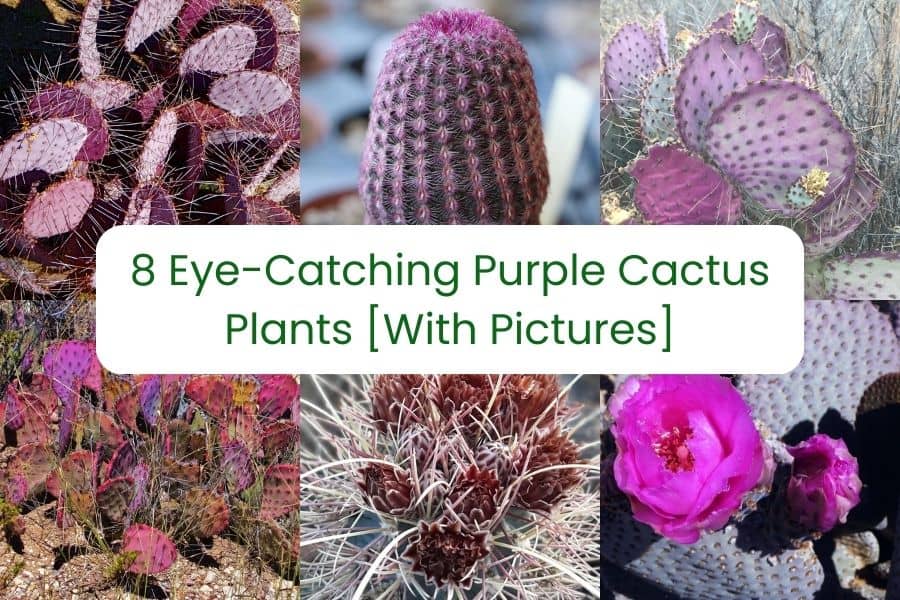
Related Post:
1000 Types of Cacti With Pictures
Contents
Purple Cactus Plants You’ll Love
Are you ready to add some seriously awesome purple to your garden or even your bedroom? Purple cactuses are not only super easy to take care of but they totally rock any space you put them in. Let’s dive into this list of eight cool purple cacti you might want to hang out with at your place.
Ancistrocactus uncinatus
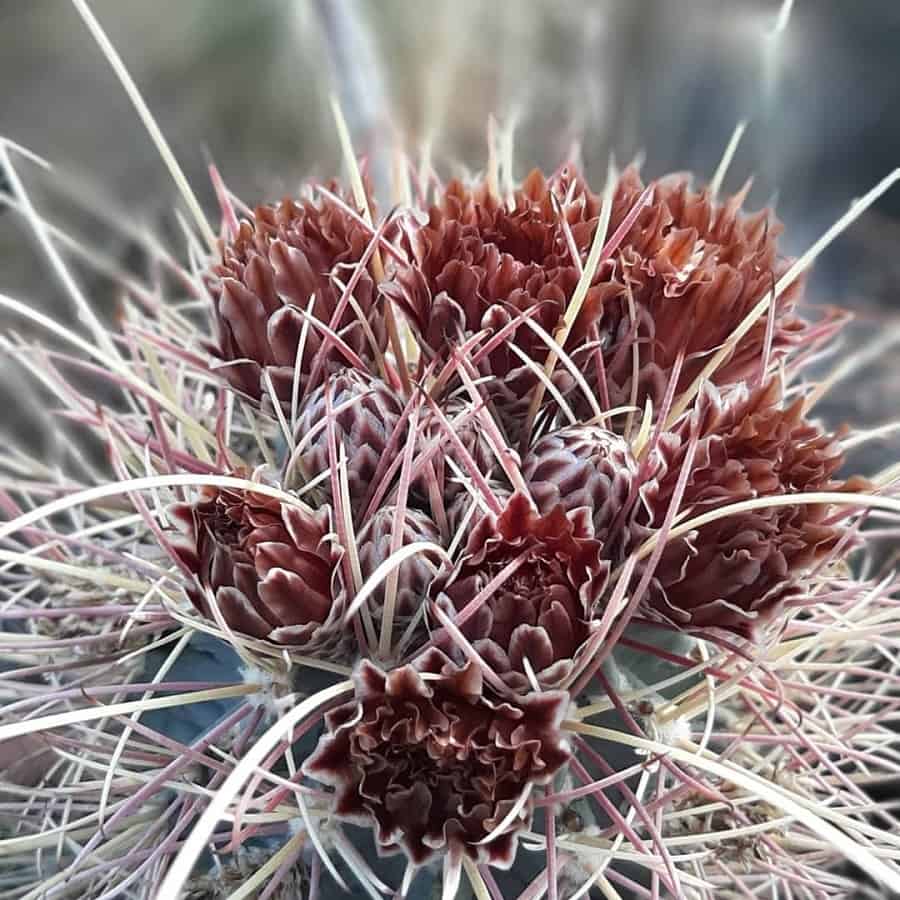
Ever heard of the Chihuahuan Fishhook Cactus? It’s this funky cactus with hook-like spines and really cool deep purple flowers. People used to call it Glandulicactus uncinatus, and it’s from the deserts in Mexico. It’s tough and grows well in different spots without much fuss.
Wait for late spring and summer because that’s when you’ll see its awesome purple flowers pop out. And don’t worry, even though it’s spiky, you can totally keep one in your house—it won’t bite and isn’t hard to take care of!
Austrocylindropuntia vestita
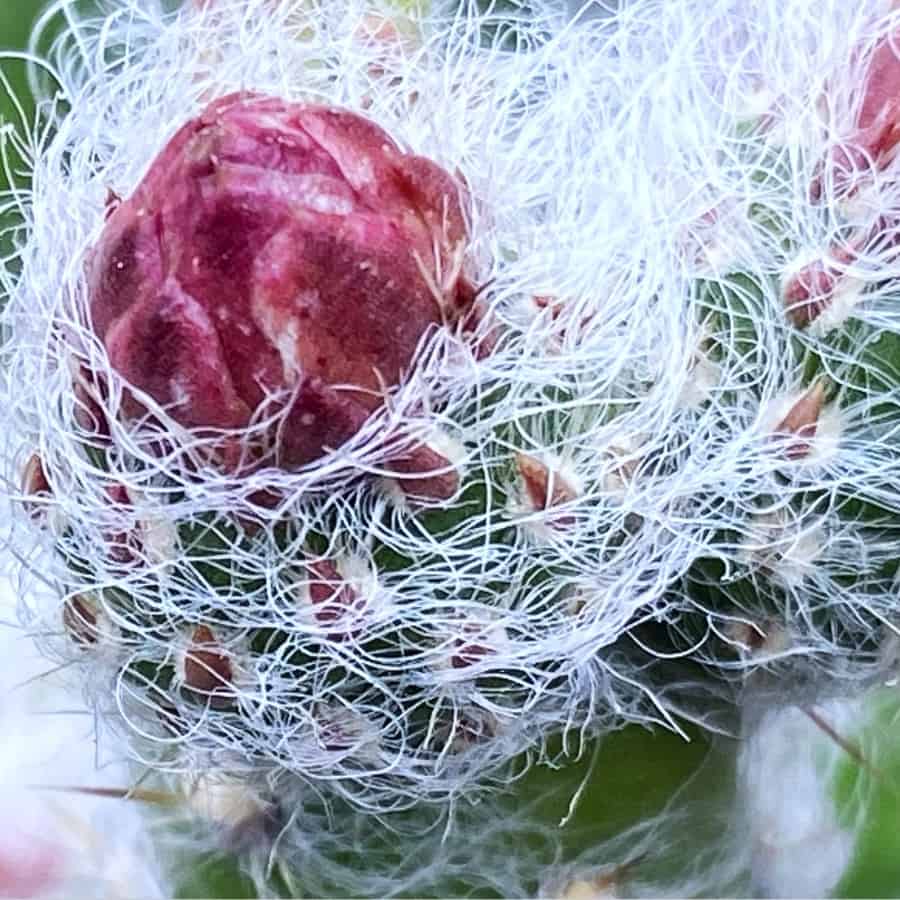
This one is called the Cotton Coral Cactus, and it’s like no cactus you’ve seen before. It comes from Mexico and has these skinny bits that stick up all over the place covered in soft white stuff that looks like hair.
When it’s warm out, this cactus shows off some deep red or purple flowers that are super pretty. It loves sunny spots and doesn’t mind if you forget to water it now and then. Bring one of these home, and it’ll definitely grab some attention.
Echinocereus engelmannii
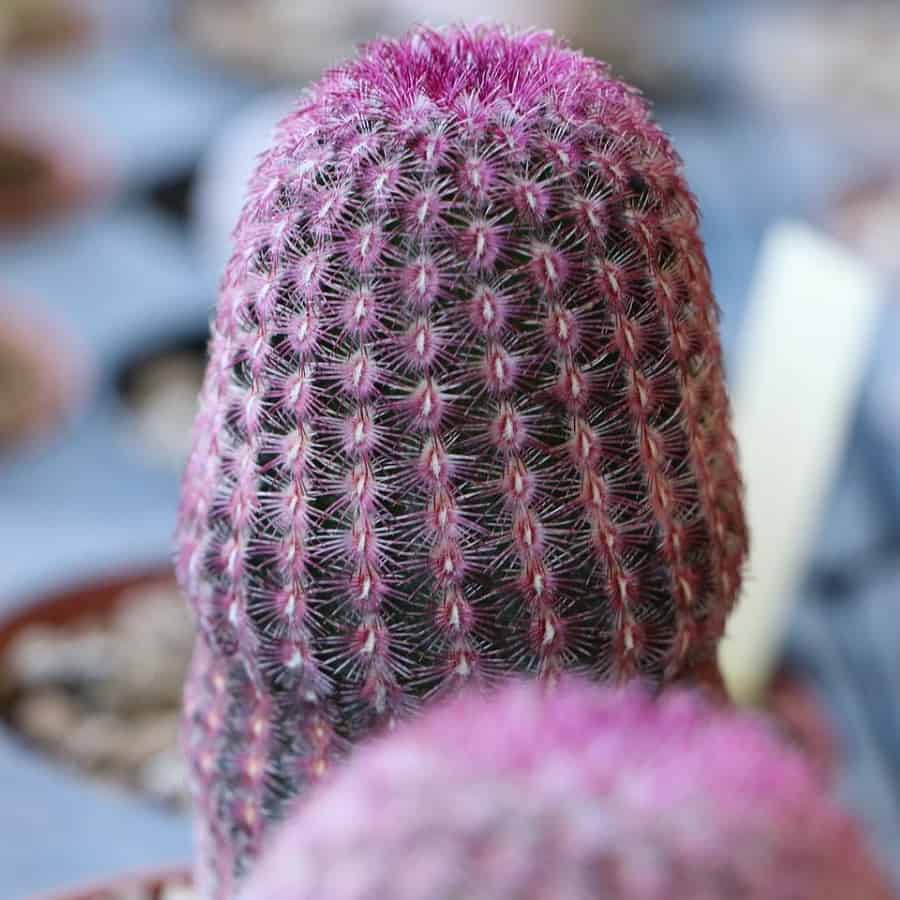
For those who relish variety, the Echinocereus engelmannii is another noteworthy cactus with purple flowers. Its vibrant blooms emerge like a crown atop the cactus, creating a display that’s both regal and wild. When in bloom, purple cactus flower enthusiasts will be enthralled by its beauty and the dose of color it adds to an arid landscape or indoor collection.
They’re named for the fruit they make that looks a bit like strawberries once they’re ripe. With lots of sunlight and not too much water, these cactuses are perfect for places that don’t get a lot of rain. And when they bloom in late spring and summer, they’re sure to add some drama to your garden.
Mammillaria hahniana
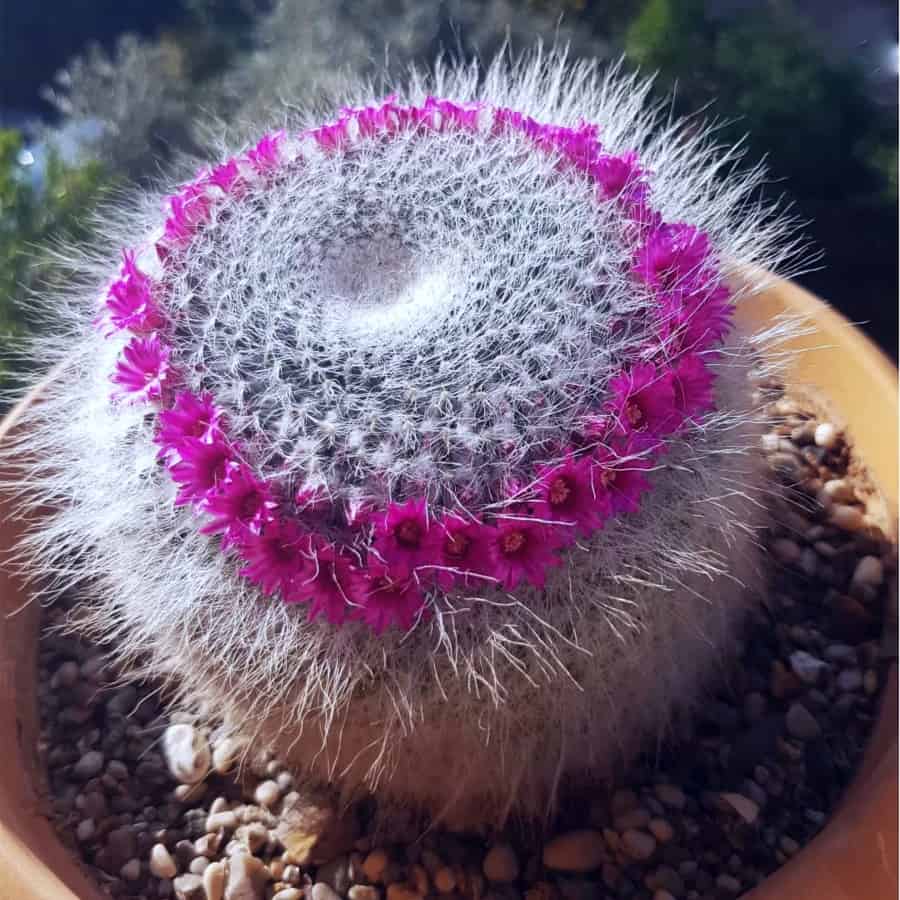
Also among the most admired cactus with purple flowers, the Mammillaria hahniana, widely regarded as the ‘Old Lady Cactus’, charms plant lovers with its endearing dome shape. This particular cactus takes center stage when its ring of purple flowers appears, offering a lovely contrast to its spiny facade.
It’s happy with lots of sun, and once it gets going, you don’t have to water it much. Whether you have a rock garden or just a sunny windowsill, this Old Lady will make herself right at home.
Opuntia basilaris
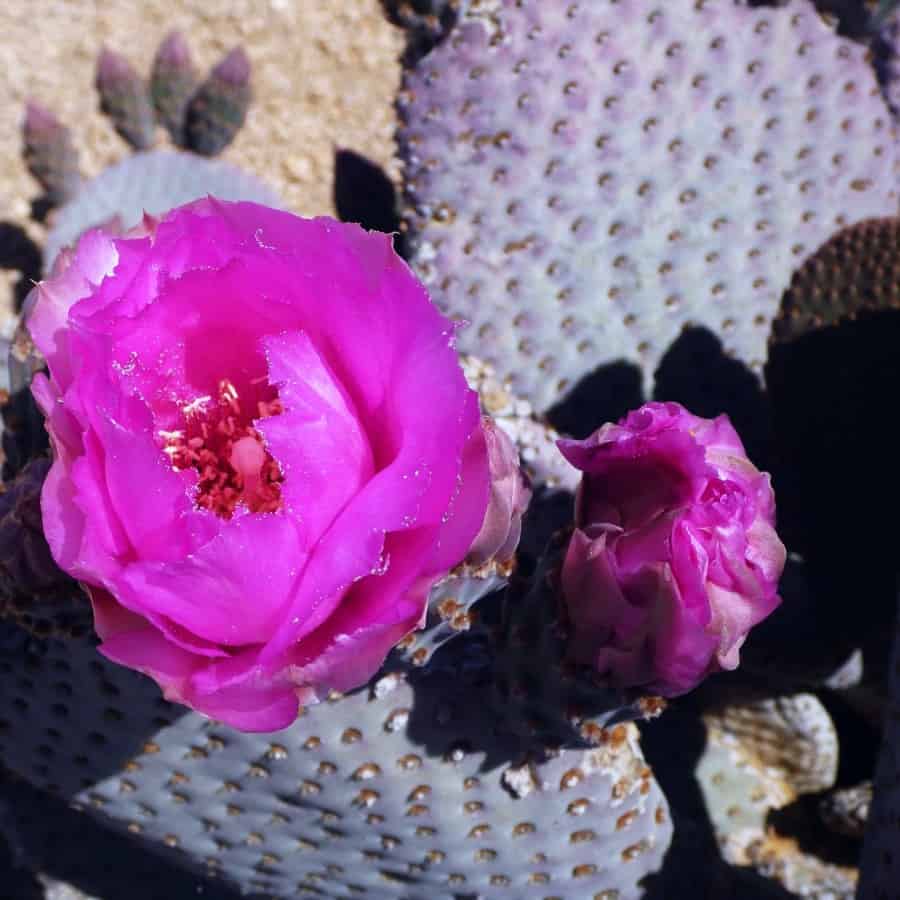
Meet the Beavertail Cactus, or Beavertail Pricklypear, from the deserts of California and Arizona. This cactus is all about the purple life, especially when it shows off its flowers in the late spring and summer. The flowers are sure to turn heads with their delicate beauty.
This cactus is a pretty chill plant that doesn’t ask for much—just some sun and a little water once it’s settled. It’s perfect for dry gardens where everyone can admire its fantastic blooms.
Opuntia macrocentra
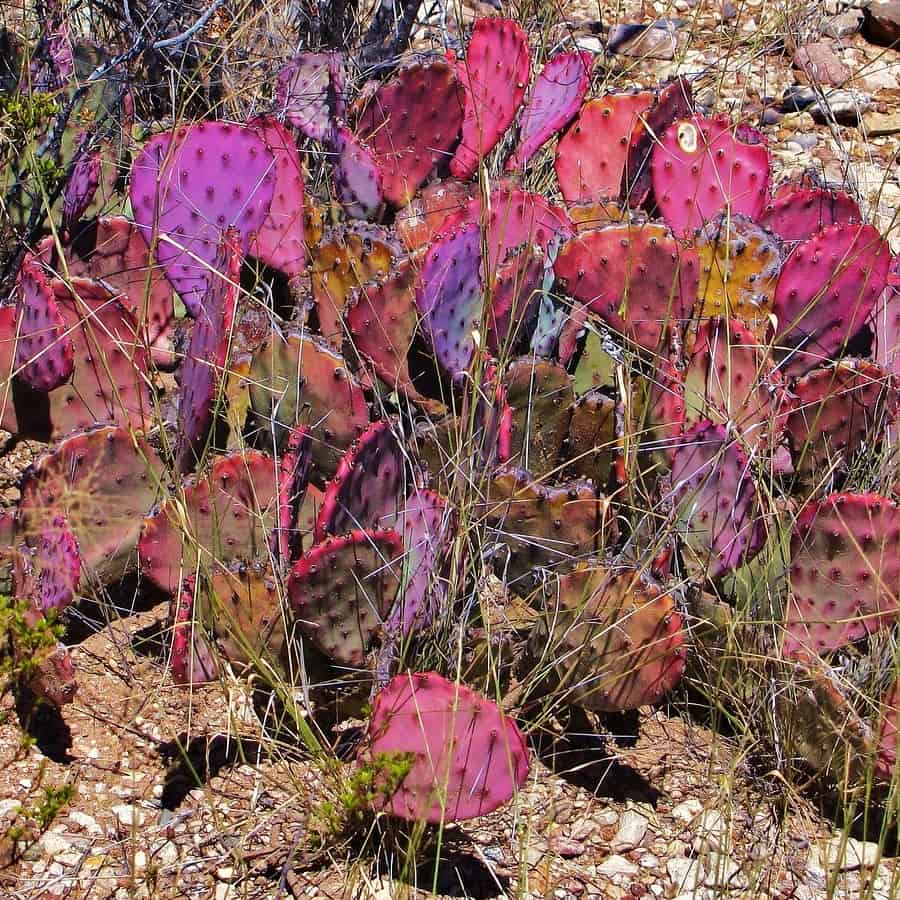
The Black-Spined Pricklypear, or Redeye Pricklypear, is a southwestern United States and Mexican desert dweller. Its paddle-like stems get covered with black spines that look pretty cool. And the purple flowers? They’re total show-stoppers.
It loves the sunny life and doesn’t mind if the soil is on the dry side. If you’re looking for something low-maintenance but super colorful, this is the cactus for your outdoor or indoor space.
Opuntia violacea var. Gosseliniana
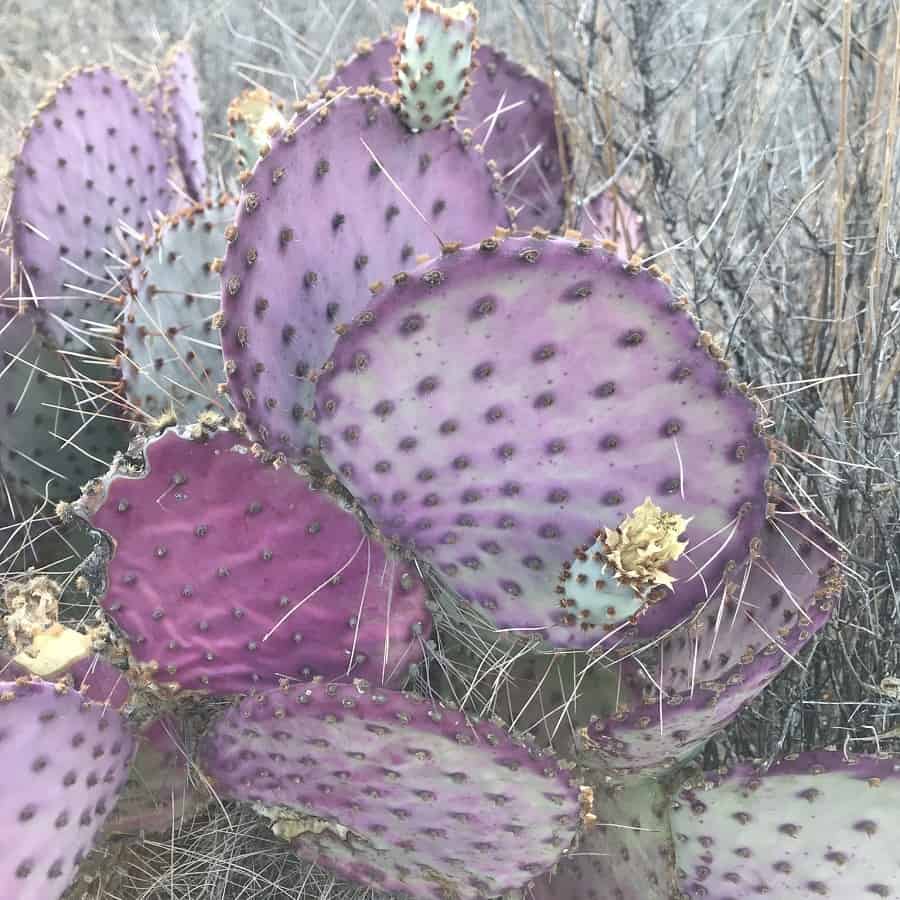
The Violet Pricklypear is a smaller cactus with a big personality. It comes from the Mexican and Southwestern U.S. deserts, too. It doesn’t get too tall and has little yellow spines that say “look but don’t touch.” And its violet flowers in warm months are really something special.
Even though it’s got a tough name, it’s a breeze to take care of. Lots of sunlight and a little water are all it needs to show off its pretty colors. Whether you keep it inside or out, it’ll sure be a stunner.
Opuntia violacea var. Santa Rita
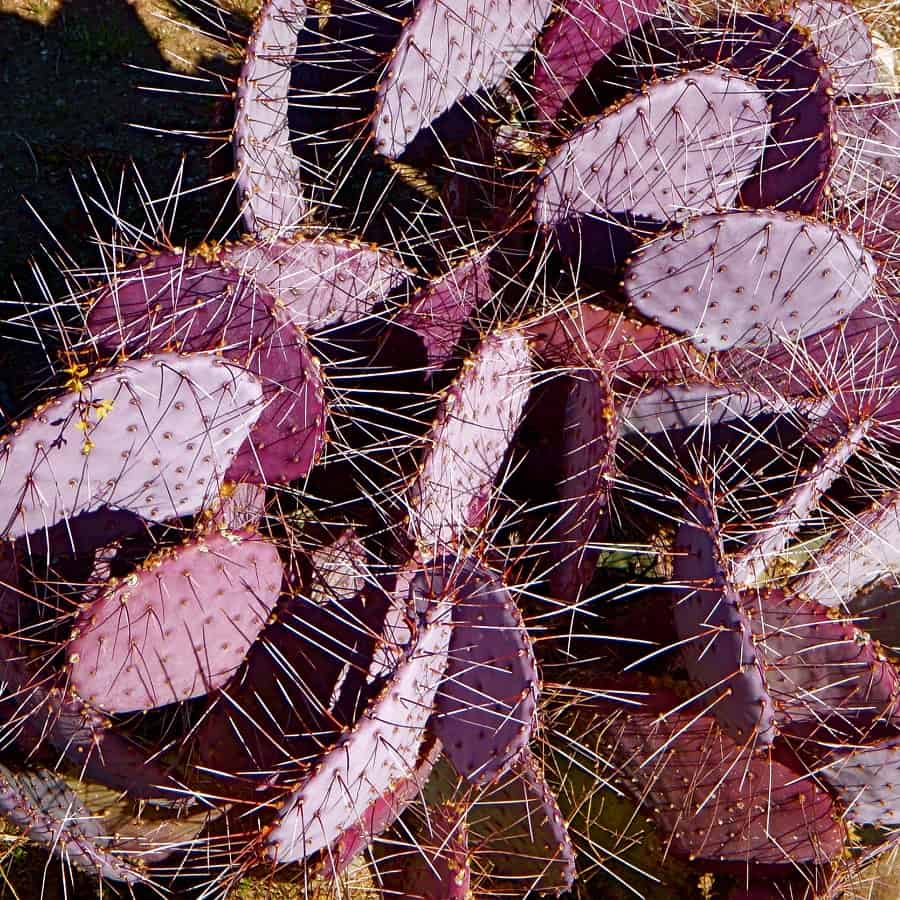
This variation is famous among purple cactus types for its bluish-purple pads and memorable appearance. If your heart desires something truly special, the Opuntia violacea var. Santa Rita flaunts purple cactus flowers that are a sight to behold. Placed in a sunny spot, the “Santa Rita Pricklypear” will reward you with blooms that not only attract pollinators but will also become the centerpiece of your garden party.
Just like its cactus cousins, the Santa Rita loves soaking up rays in full sun and doesn’t need much water to be happy. It’s super easy to care for, even if you’re pretty new to this whole plant-owning thing. Indoors or out, it’ll bring a big splash of purple to your life.
What is the purple cactus called?
So you’re wondering about that cool purple cactus, right? It’s actually called Opuntia, and it’s got a bunch of different types like Opuntia macrocentra, Opuntia violacea var. Gosseliniana, and Opuntia violacea var. Santa Rita. These desert-loving plants are from places like Mexico and the southwestern part of the United States.
Purple cactuses are super easy to look after. They’ve got these amazing flowers and spikey parts in all sorts of colors. They’re perfect for places that don’t get much rain, and you can grow them inside your house or outside in the garden.
How do you take care of a purple cactus?
Want to make sure your purple cactus is living its best life? Here’s what you’ve gotta do: Give it plenty of sunlight and some water, but not too much. These Opuntia cactuses need to chill in the sun for about six hours every day. When it gets hot in the summer, they’ll want a drink more often, but in the winter, you can chill with the watering can.
Remember to feed your cactus buddy once a month with special cactus food to help it grow big and strong. And don’t go crazy with the pruning unless you really have to, because you might hurt it.
Why is my purple cactus not purple?
If your purple cactus isn’t rocking that purple vibe, it might need more sun. Opuntia cactuses really need that bright light to show off their best purple colors. If your cactus is stuck inside without much light, try setting up a spotlight for plants so it can strut its stuff.
Keep in mind these cactuses aren’t born purple. It might take up to a year for those colors to come in all the way, so don’t stress and just enjoy watching it grow.
Purple Cactus Wrap-Up
Each purple cactus variety brings its own unique brand of beauty, whether through a dazzling purple cactus flower or the distinctive charm of a cactus with purple spikes. They’re more than just plants; they’re a statement. By choosing one of these remarkable cactuses, you’re signing up for a rewarding experience that extends far beyond the usual greenery. Watch as your purple cactuses transform your space, offering vivid pops of color and unmatched artistic appeal.
